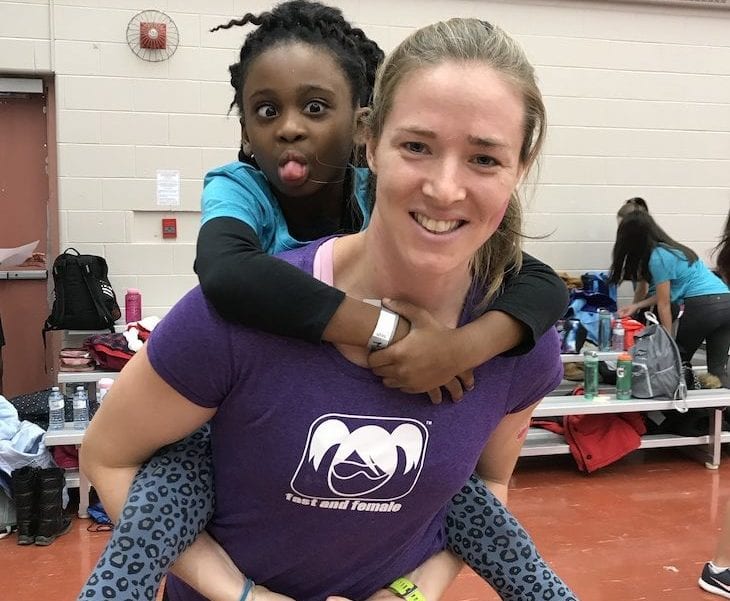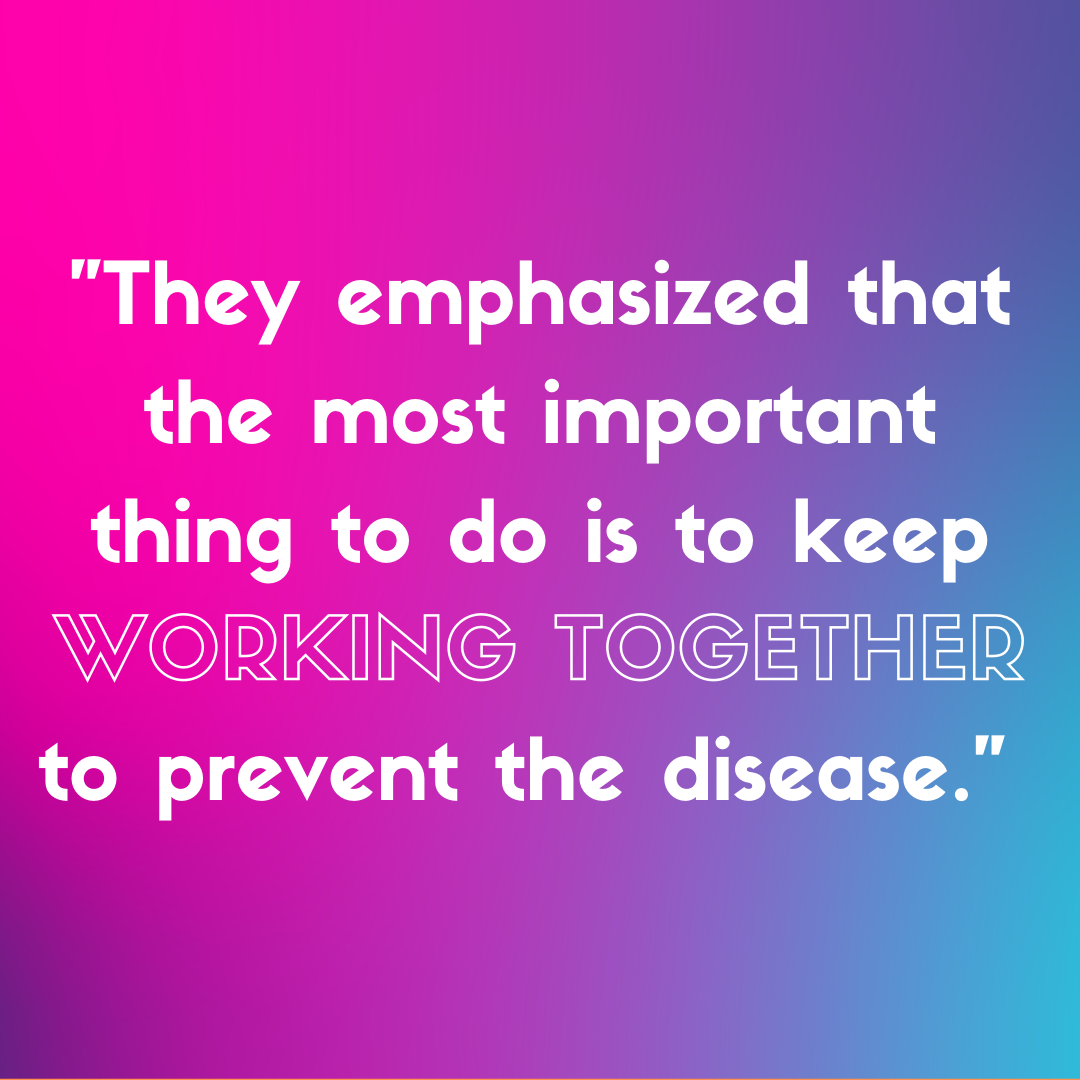“The more women move, the better women feel. Yet, over half of the women are…

STRONGER TOGETHER: Breaking Down COVID-19 with Ambassador Alexa Irvin
 Hey everyone! My name is Alexa Irvin, and I am a Fast and Female Ambassador, a member of the Canadian Sprint Kayak team, and am working on a degree in Epidemiology. Until a few weeks ago I was at a training camp in Florida, getting ready to race at Olympic Trials in April. Well, as we all know, things have changed a lot in the past few weeks! I am now back at home in Nova Scotia, self-isolating, and doing my best to stay busy in these uncertain times. Although the world seems upside down, I am really proud of how my teammates, community, and people around the country are dealing with this pandemic. We really are stronger together, and it has been so inspiring to see how people are supporting each other (virtually!) during this challenging time.
Hey everyone! My name is Alexa Irvin, and I am a Fast and Female Ambassador, a member of the Canadian Sprint Kayak team, and am working on a degree in Epidemiology. Until a few weeks ago I was at a training camp in Florida, getting ready to race at Olympic Trials in April. Well, as we all know, things have changed a lot in the past few weeks! I am now back at home in Nova Scotia, self-isolating, and doing my best to stay busy in these uncertain times. Although the world seems upside down, I am really proud of how my teammates, community, and people around the country are dealing with this pandemic. We really are stronger together, and it has been so inspiring to see how people are supporting each other (virtually!) during this challenging time.
Now that I’m home, I have had a bit more time to focus on school. For those of you who aren’t familiar with epidemiology, it is the study of the distribution of disease (and determinants of disease) within a population. As you can imagine, it is pretty relevant right now, because as the virus spreads around the world, epidemiologists are working hard to understand the virus and disease, and learn how to stop it.
Living through a global pandemic is definitely not something anyone wants to do, and it can be especially scary for kids, as well as parents of young children, who are struggling to understand and explain all of the instructions and information coming at us every day. In the spirit of Fast and Female, I hope I can “spread the love” a little bit and explain some key concepts related to COVID-19 using what I have learned in school!
What is coronavirus?
You’ve probably heard a lot of different terms being used for what is happening right now: coronavirus, novel coronavirus, COVID-19, and maybe even SARS-CoV-2. All of these terms are related to the virus that is causing the current pandemic, and the disease that people get when they are infected with the virus.
Coronaviruses are a big family of viruses. Although viruses are different than plants or animals, they still have their own genetics and can be related to each other. Coronaviruses are named “corona” because they have spikes on their surfaces that make them look like they are wearing a crown (corona means crown in Latin).
The virus that is causing the current pandemic is one specific type of coronavirus. At first, it was called the novel coronavirus, because it was a new virus to infect humans. In February, the International Committee on Taxonomy of Viruses named the virus “severe acute respiratory syndrome coronavirus 2”, or SARS-CoV-2 for short. This is because the new virus is related to the other SARS virus that caused the SARS outbreak in 2003.
Most days when you watch the news, you will probably hear people refer to COVID-19. This is the name of the disease that SARS-CoV-2 causes in humans. When people talk about diseases, they usually use the name of the disease instead of the name of the virus, because it is generally shorter and easier to understand.
 Coronaviruses: family of viruses
Coronaviruses: family of viruses
SARS-CoV-2: the virus that is causing the current pandemic
COVID-19: the disease caused by SARS-CoV-2
Pandemic: “Pandemic” definitely sounds like a scary word. It might make you think of movies or books where everyone gets sick, and there is a general state of emergency. In scientific terms, a pandemic occurs when there is worldwide spread of a new disease, such as COVID-19. On March 11, the World Health Organization (WHO) officially declared COVID-19 to be a pandemic, because there were cases of the new disease in over 100 countries around the world. However, the message from the WHO was also clear: just because COVID-19 is now called a pandemic doesn’t mean that we should panic. They emphasized that the most important thing to do is to keep working together to prevent the disease.
“Flatten the Curve”: You have probably heard the term “flatten the curve” or even “plank the curve” a lot over the past few weeks. It’s usually followed up with instructions to stay at home, maintain social distance (2m apart!), and make sure to keep washing your hands. When people talk about “flattening the curve”, they are talking about slowing down the rate of infection over time. Even if the same total number of people gets infected, if the infections are spread out over two months versus one week there will be less people sick on any given day. This means that hospitals and health care providers will be better equipped to help the people who are sick because there will be enough doctors, nurses, and beds for everyone. The best way to flatten the curve and slow down (or ideally prevent) infection is to stay home!
Social Distancing: Last but not least, social distancing! This is another term that is quickly becoming part of our every day language. According to the Government of Canada, social distancing means to make changes to your daily routines to avoid close contact with others. From a real life perspective, this means staying home, not visiting people you don’t already live with, such as your friends and neighbours, and staying away from crowded places. When you do have to go out (for example, to get groceries), you should make sure that you are staying at least 2 meters away from other people. This is because the virus can be spread through water droplets when you cough, sneeze, or spit, and these water droplets can travel about 2 meters away from your mouth or nose when you do these things.
Social distancing can feel pretty lonely, especially when we  are used to hanging out with our friends, playing sports, and going to school and work. However, it is really important for us to keep doing it so we can slow down and stop the spread of the virus. One of the biggest things that have helped me adjust to social distancing has been doing my at-home workouts on FaceTime with my teammates! It is nice to chat with them and feel like we are still working towards our athletic goals. It’s also really important to reach out to family and friends that you don’t get to see in person these days. A quick text or phone call can really make someone’s day, and make us feel a little more together even though we are apart.
are used to hanging out with our friends, playing sports, and going to school and work. However, it is really important for us to keep doing it so we can slow down and stop the spread of the virus. One of the biggest things that have helped me adjust to social distancing has been doing my at-home workouts on FaceTime with my teammates! It is nice to chat with them and feel like we are still working towards our athletic goals. It’s also really important to reach out to family and friends that you don’t get to see in person these days. A quick text or phone call can really make someone’s day, and make us feel a little more together even though we are apart.
Alexa Irvin is a long-time Ambassador, a Fast and Female Event Coordinator, and a super role model. We are so grateful for her contributions and insight. We understand that this is a really uncertain and tough time for everyone, and we are here for you. We’re all in this together.
We acknowledge that this blog is not an extensive guide to the current COVID-19 situation. If you are looking for more information on COVID-19 from the World Health Organization, please click here. If you are looking for more information on COVID-19 in Canada, please click here. If you are looking for more information on COVID-19 in the USA, please click here.
References:



